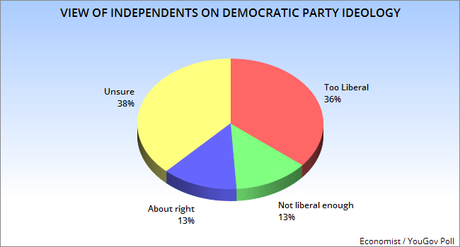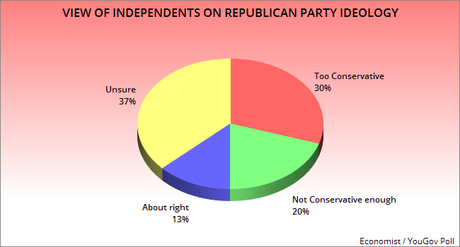

I recently had a heated discussion on social media about the ideology of Independent voters. He was convinced that most Independents were progressives, and moving the Democratic Party further to the left would appeal to those Independent voters. Sadly, many of his Bernie-supporting brothers and sisters agree with him.
Many far-right conservatives have a similar opinion. They are convinced that most Independent voters are conservatives, and can be appealed to by moving the Republican Party further to the right (if that is even possible).
Both those on the left and those on the right are wrong. They are both engaged in wishful thinking. The truth is that most Independents are moderates. As the charts above show, only 13% want the Democratic Party to be more liberal (progressive) and only 20% want the Republican Party to be more conservative. The vast majority are moderates, and a significant portion of them already think the Democrats are too liberal (36%) and the Republicans are too conservative (30%).
The party that appeals most to these Independent voters will win in 2018 (and 2020) -- but moving toward a more progressive or conservative position is NOT the way to appeal to these voters. I believe these voters do want change -- a change that will provide benefits for citizens and the economy. But they do not want radical change. These voters want change to be done in small steps, so they can make sure the changes don't destroy the good that already exists. Large radical changes (by either the left or the right) scares them.
That frustrates those on the left and the right. I know that because I am a die-hard leftist (socialist). But I am also a realist, and I know that we must win before we can make change. We will only win by getting these moderate Independents to trust us -- and that won't happen by becoming more extreme. Losing means that no progressive changes (even small ones) will happen.
The charts above are from a new Economist / YouGov Poll -- done between April 29th and May 1st of a random national sample of 1,500 adults, with a 3.1 point margin of error. The margin of error among just Independents will be slightly higher.

